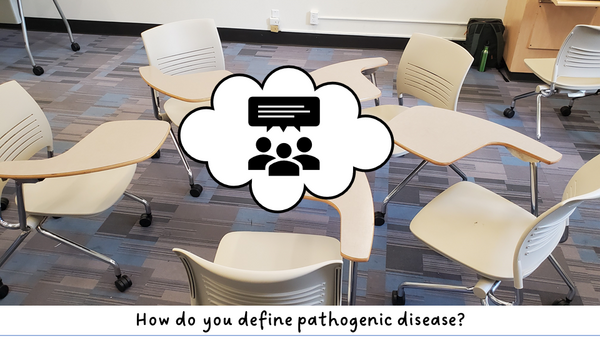
Contagious diseases are unavoidable realities of life. Thus, understanding pathogens and their respective diseases is important in many biological subfields including evolution, ecology, health sciences, microbiology, and others. While all college students will have encountered pathogenic diseases at some point in their lives, many will not have studied them in a classroom setting. As a result, students may not be able to accurately formulate a comprehensive definition of pathogenic disease on their own. Here, I provide an engaging activity where students construct a definition of pathogenic disease based on their lived experiences using the think-pair-share technique. Students are asked to define pathogenic disease individually, then in small groups, and finally as an entire class. At the end of this activity, the class will have agreed upon one definition for pathogenic disease. Following this, the students are asked to put their new definition into practice by completing a categorization activity where they must sort different diseases into the following categories: genetic, environmental, or pathogenic. This immediate application of new knowledge helps foster long-term learning. Students were highly engaged with the material, and this lesson also fostered a sense of classroom community as it encouraged students to share their knowledge while completing the categorization assignment. An end-of-term review activity showcased that the students were able to recall the information learned during this lesson at the end of the course. This lesson is easy to implement and can help students understand pathogenic disease in both introductory and advanced courses.
Primary Image: Think Pair Share! How to define pathogenic disease. Several desks are arranged in a circle. The question “How do you define pathogenic disease?” is written along the bottom. In the middle of the circle of desks there is a thought bubble with a symbol of people talking within it.